Hole in the Clouds
Dec 27, 2009
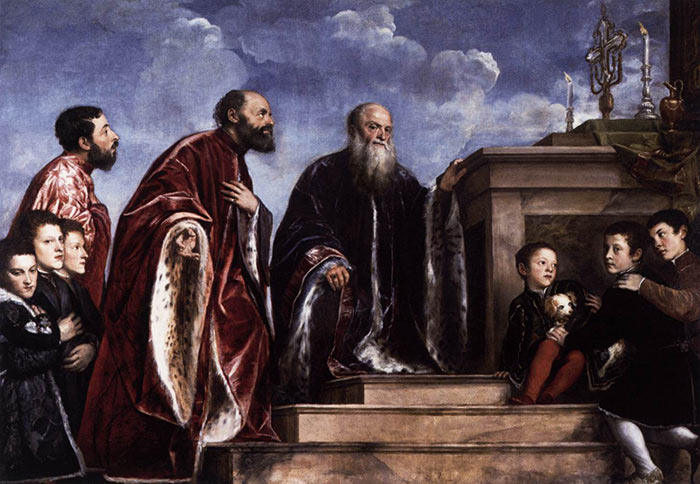
In 1543, the artist Titian painted this picture of the male members of the Vendramin family of Venice, who are shown venerating what is said to be a relic of the cross on which Jesus was crucified. The relic actually belonged to a different Venetian family, but some years earlier it had been accidentally knocked into a canal during a procession, and Andrea Vendramin, the grandfather of the doge in the center of this portrait, had dived in after it and retrieved it, thus sealing a special relationship between it and the family.
It is believed that Titian had help in completing this portrait; specifically, it is said that his apprentices painted some of the children. Titian himself did the boy with the red stockings and the dog, but the three boys at the left, and perhaps also the two other boys at the right, represent the work of his assistants.
painting
dog
art
Vendramin family
Titian
Venice
Jan 31, 2013
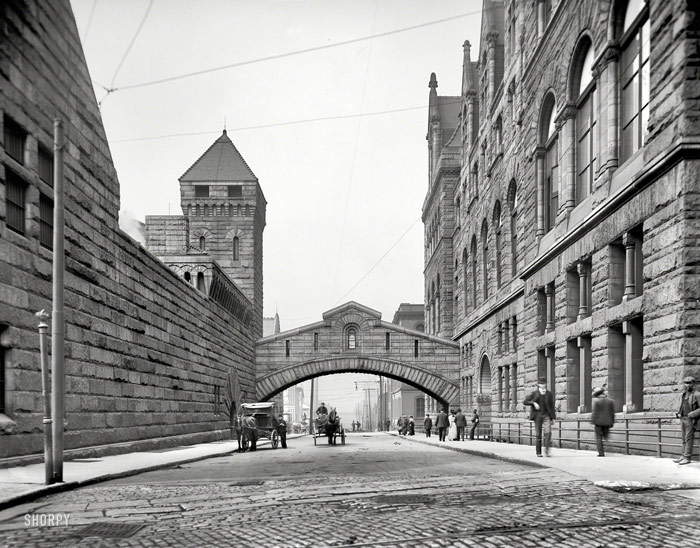 This 1880s-era bridge connecting the Allegheny County courthouse with the jail in downtown Pittsburgh is a fair replica of the seventeenth-century Bridge of Sighs in Venice, which connected the prison with the interrogation chambers in the doge's palace.
This 1880s-era bridge connecting the Allegheny County courthouse with the jail in downtown Pittsburgh is a fair replica of the seventeenth-century Bridge of Sighs in Venice, which connected the prison with the interrogation chambers in the doge's palace.
In Pittsburgh as in Venice, prisoners being escorted across the bridge were said to catch a final glimpse of life on the outside before disappearing into the labyrinths of judicial inquistion and disposition. In both cities, too, the bridges and buildings survive to this day; the courthouse building at right in this picture is still an active courthouse, though the jail building at left now houses the county Family Services agency.
Modern-day photos, however, reveal an oddity: the bridge now appears to loom much higher above the street than it did back in 1903, when the picture above was taken. An urban-improvement project known as the Hump Cut, completed in 1913, flattened out major downtown streets in Pittsburgh, lowering Fifth Avenue here by several feet.
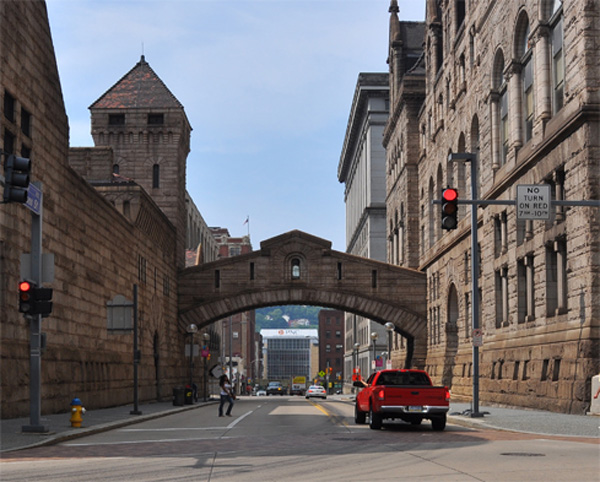
Pennsylvania
streetscape
Pittsburgh
Venice
bridge
1903
courthouse
jail
(Image credit: Detroit Publishing via Shorpy)
Jul 22, 2013
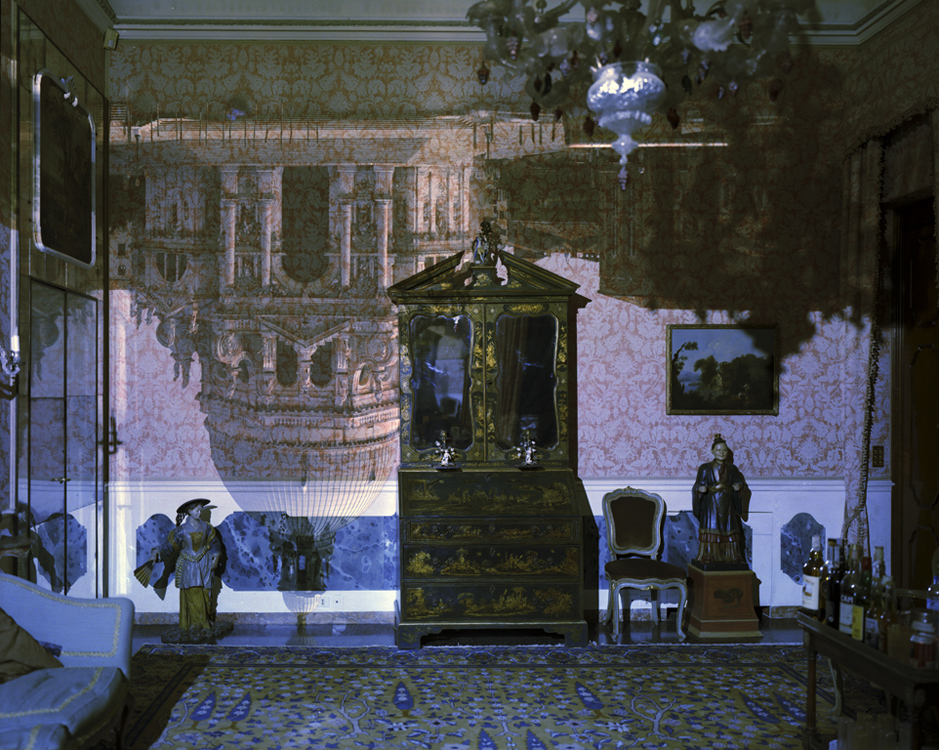 Photographer Abelardo Morell describes how he created these Venetian scenes:
Photographer Abelardo Morell describes how he created these Venetian scenes:
I made my first picture using camera obscura techniques in my darkened living room in 1991. In setting up a room to make this kind of photograph, I cover all windows with black plastic in order to achieve total darkness. Then, I cut a small hole in the material I use to cover the windows. This opening allows an inverted image of the view outside to flood onto the back walls of the room. Typically then I focused my large-format camera on the incoming image on the wall then make a camera exposure on film. In the beginning, exposures took from five to ten hours.
Over time, this project has taken me from my living room to all sorts of interiors around the world. One of the satisfactions I get from making this imagery comes from my seeing the weird and yet natural marriage of the inside and outside.
A few years ago, in order to push the visual potential of this process, I began to use color film and positioned a lens over the hole in the window plastic in order to add to the overall sharpness and brightness of the incoming image. Now, I often use a prism to make the projection come in right side up. I have also been able to shorten my exposures considerably thanks to digital technology, which in turn makes it possible to capture more momentary light. I love the increased sense of reality that the outdoor has in these new works .The marriage of the outside and the inside is now made up of more equal partners.
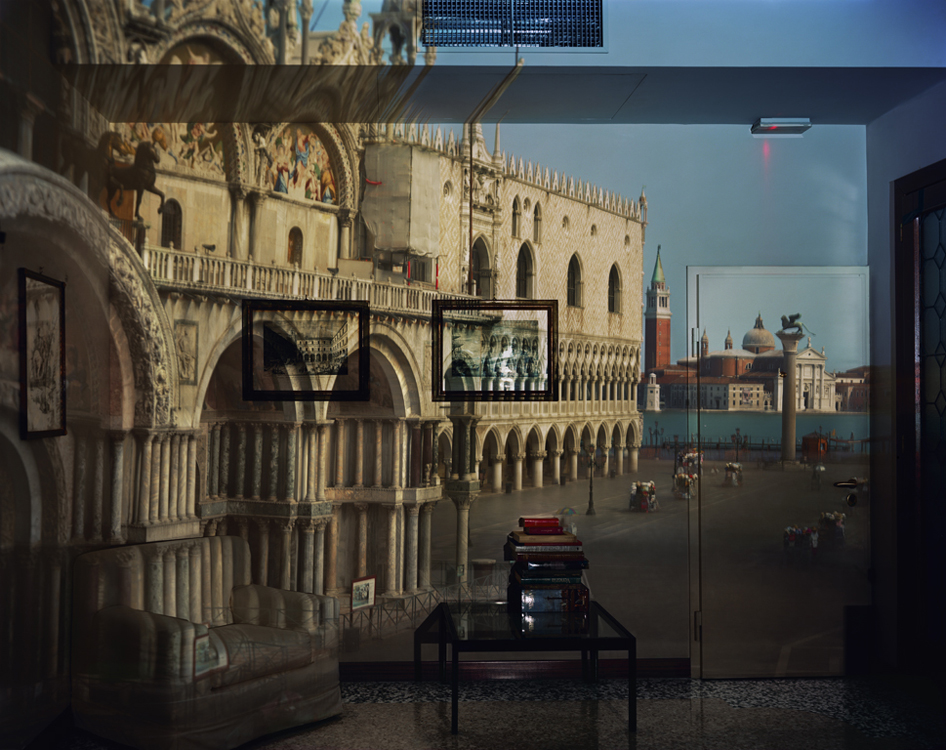
Morell photographed Venice in 2006. The top picture is of Santa Maria della Salute in a living room. The lower picture shows Piazzetta St. Marks prismatically inverted in an office.
art
Venice
cityscapes
(h/t: Sandra Horowitz)
pinhole camera
camera obscura
(Image credit: Abelardo Morell)
Mar 18, 2014
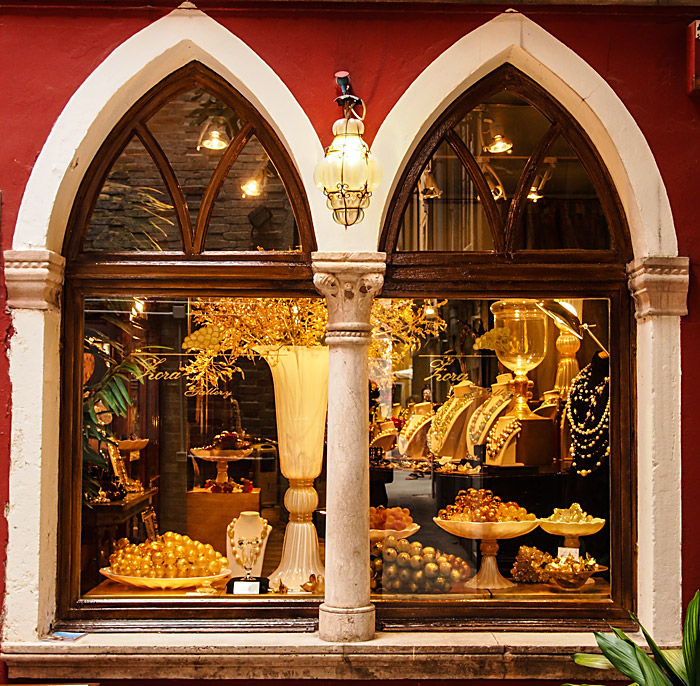 Through the window glass in Venice.
Through the window glass in Venice.
Venice
Italy
window
gallery
Jan 26, 2017

night
Venice
Italy
time exposure
canal
(Image credit: Trey Ratcliff via Stuck in Customs)






